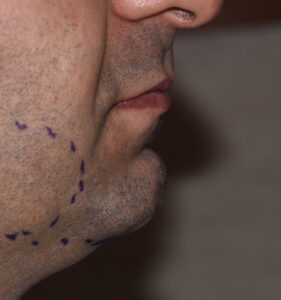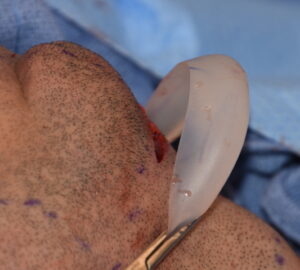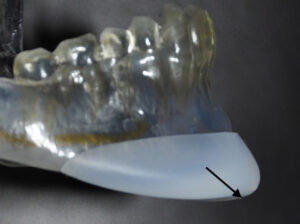Background: The common nature of aesthetic chin augmentation, which often employs pure horizontal augmentation, makes it seem like a straightforward procedure. While this may be true in many chin augmentation patients, it speaks to what is the most overlooked/underdiagnosed aspect of chin augmentation …lack of vertical height.
A vertically short lower chin can be hard to diagnose particularly when the chin is horizontally short as well. The small appearance of the chin can lead one to believe that it is all due to it being horizontally short. But several key anatomic features can help make the diagnosis of a vertical deficiency as well. Lack of adequate lower third of the face height is most commonly cited. And this can easily be assessed in both front and profile views. But a deep labiomental fold with a high soft tissue chin pad is often seen in the vertically short chin. The lack of bone height drives up the soft tissue chin pad which subsequently deepens the labiomental fold.
While pure vertical chin deficiencies do occur, far more occur with a horizontal deficiency as well. The ratio of horizontal:vertical deficiency will vary for each such patient but approximate 50:50 ratios are most common. This creates a need for an implant that can effectively create that type of chin change. (provided one is using an implant as opposed to a bony genioplasty) Too often surgeons try to use a standard implant style that is not really made to achieve that type of chin dimensional change. Placing a horizontal chin implant low on the bone to create vertical lengthening is both unstable and ineffective.
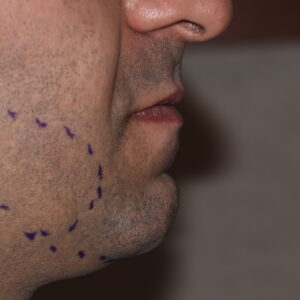
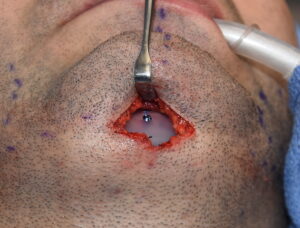

Case Highlights:
1) The benefits of increased vertical height in chin augmentation is often overlooked/under diagnosed.
2) The alloplastic option for increasing the vertical dimension along with horizontal augmentation is the vertical lengthening chin implant style.
3) The length of the soft tissue chin pad will be increased with the vertical lengthening chin implant and the depth of the labiomental fold will subsequently become a little less.
Dr. Barry Eppley
Indianapolis, Indiana




